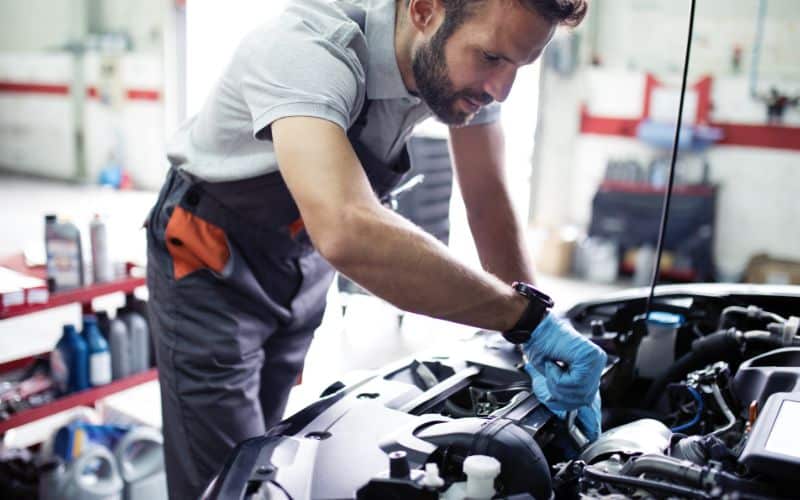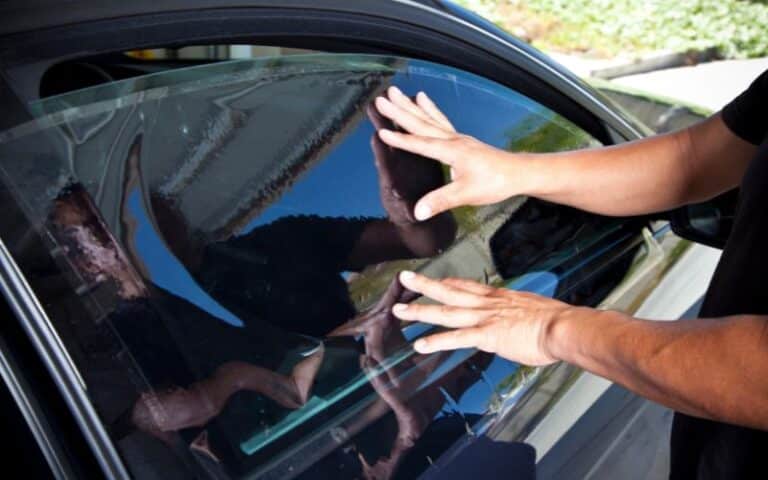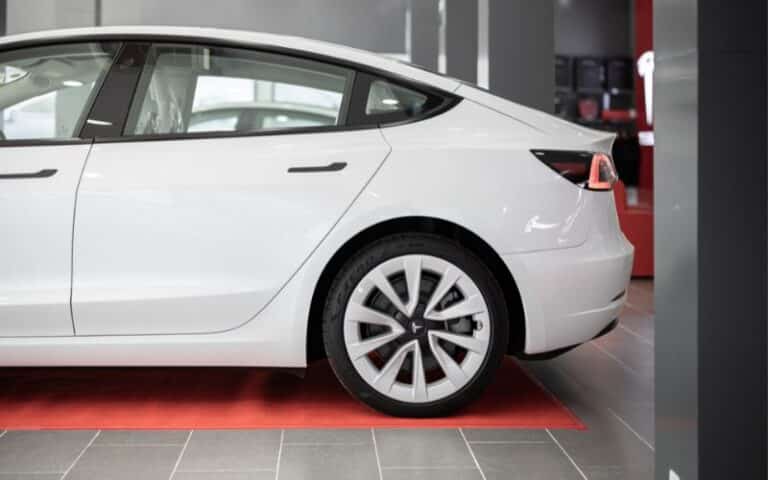Tesla Cabin Climate Control Requires Service!
Tesla vehicles have some amazing features, and the climate control system is one of them. The control system is complex as it uses many features to regulate temperature.
Unfortunately, the sophistication of this system can produce problems. The system notifies the owner of such issues with a servicing message.
These issues mostly have simple solutions, which the article below will highlight.
The climate control of your Tesla shows an error notification that tells you that the system needs service. This message comes up whenever there’s an issue with the car’s climate features. The issues are usually software troubles and inadequate cooling or heating. You might notice a malfunction in the climate control before getting the message.
The article below will highlight the common ways you can tell when climate control needs service. You’ll also learn how to fix some of these issues by yourself.
Furthermore, by the end of the article, you’ll know how to adjust the cabin overheat protection on your Tesla.
How Can You Tell When Your Tesla Cabin Climate Control Requires Service?

The error notification is the main way to know if your Tesla cabin climate control requires services.
The notification reads, “Cabin Climate Control system requires service.” It may also display “Climate Keeper unavailable due to system fault” as the notification.
This message means there are issues in one or more of the sensors or any other hardware associated with climate control.
It is important to investigate these error messages immediately to continue enjoying all the car’s climate features.
Report all error codes to Tesla service so they can find out what’s bringing up the message and fix it.
You can also tell that your Tesla cabin climate control requires service if you experience the following.
#1. Inadequate Cooling and Heating
This issue is very common when it comes to climate control problems. Sometimes, the heating and chilling features don’t operate at their capabilities.
You might get cooling when you activate the heat and heating when you enable cooling.
Also, the heating feature might refuse to engage in very cold weather. This problem arises from the car’s heat pump.
Tesla added a heat pump to the HVAC system of some Tesla models to boost efficiency. Heat pumps have the opposite operation principle of air conditioners.
It collects existing heat and directs it out of the vents to heat the cabin. This issue is prevalent in climates of 5 degrees Fahrenheit and under.
The HVAC system won’t get enough heat to redirect in such weather since the car won’t generate much heat in the extreme cold.
This issue can be discomforting, and you’ll need to take the car to Tesla service for fixing.
#2. Firmware and Software Problems
The entire climate control system needs the firmware and software to run properly.
Sometimes, the firmware and software are old versions and can no longer execute commands from the user. The climate control feature might even refuse to turn on or respond.
These problems might stem from the software. The solution would be updating the software.
#3. Malfunctioning Sensors
In a Tesla, four sensors regulate the temperature in the climate control system.
The sensors include;
- Cabin temperature sensor
- Proximity sensor
- External temperature sensor
- Sunlight sensor
These sensors can malfunction because of damage to the sensor and faulty wiring. You usually won’t be able to tell what sensor is having issues.
Therefore, you’ll have to go to the service center for repairs.
#4. Preventive Measures
There are steps to take so you don’t receive error messages from your climate control system. One such step is servicing the air conditioning.
Tesla advises owners to service their air conditioning or change the desiccant container between two to six years.
The timeframe for servicing air conditioners is different for various models.
The table below highlights the timeframes.
| Model Type | Service Period |
|---|---|
| Model 3 | Six years |
| Model Y | Four years |
| Model S (2021) | Three years |
| Model S (2012 to 2020) | Two years |
| Model X 2021 | Four years |
Can You Service The Tesla Cabin Climate Control Yourself?
There are some ways you can service the cabin climate control to fix some issues. However, it’s advisable to consult Tesla service anytime an issue arises.
The following are some servicing methods for Tesla cabin control.
#1. Software Update
Software issues happen most of the time due to outdated software. You can easily solve this by updating your car’s software.
The steps below will guide you on software updates.
- Connect your Tesla vehicle to a steady network.
- On the display, select “Controls”.
- Tap on “Software Update” to see the latest updates.
- Tap on “Install Now.”
#2. Soft Reset
If you don’t see an update after completing the above, you can try to soft reset the system. Soft resetting will wipe away any bugs in the system and hopefully get it working again.
You can follow these steps to reset the system.
- Make sure to park the car and sit in the driver’s chair.
- Push down on the dual scroll wheel keys till the monitor goes off.
- Once the Tesla symbol displays, release the keys and leave the system to reboot.
#3. Hard Reset
This process deletes any saved data on the system, and you should only try it if all the above solutions fail.
The steps below will guide you on hard resetting your climate control system.
- Park your Tesla and turn it off.
- Lift the front truck so you can reach the 12V car battery.
- Unplug the negative cathode from the car battery.
- Keep the negative cathode unplugged for over 5 – 10 minutes.
- Plug the negative cathode and put on your car.
#4. Fixing Lack of Heat Issue
The heat feature might not come on when you activate it. Usually, this problem occurs in extremely cold areas. The cold doesn’t allow the HVAC to push heat into the cabin.
The following options can help solve the heating issue.
- Fix the climate at Auto and input a comfy temperature.
- Engage the recirculating air mode feature.
- Park the Tesla in a warm place so it can warm up.
- Precondition your Tesla about one hour before you leave while it’s charging.
- Reboot the Tesla by holding down the steering wheel keys, then try engaging the heat feature again.
If all the above steps fail, you can contact Tesla service using these steps.
- Sign in to the Tesla phone app.
- Choose the Service option.
- Select the topic and add details of your problem.
- You can add videos and pictures to help your case.
- Next, you’ll input the address of the center you’d like to service your car.
- Tesla will give you an appointment for servicing.
How to Adjust the Cabin Overheat Protection on Tesla
You can adjust the Cabin Overheat Protection by selecting Controls, then Safety, then Cabin Overheat Protection. Here, you can choose the best fit among the options.
The Cabin Overheat Protection feature keeps the cabin warm when temperatures are high. This feature is useful when you park the car under the sun.
You can stop the cabin from overheating during this period by engaging the feature. The feature takes about 15 minutes to engage after leaving the vehicle.
Comfort is the aim of this feature, and the vehicle’s component does not influence it.
Under the menu, you can select any of the following.
- On: The car’s A/C starts running when the temperature in the cabin is over 40°C. You can also choose the temperature on the monitor or phone app.
Setting the temperature requires you to use the updated app version.
- No AC: This setting turns on the fan so surfaces won’t overheat.
- Off: Turns off Cabin Overheat Protection.
Also, you can turn on the Cabin Overheat Protection using the phone app. One advantage of the app is that you can turn it on remotely.
In the app, head over to Climate. Scroll through the menu and select the setting of your choice within Cabin Overheat Protection.
The feature runs continuously for 12 hours after you leave the car. However, the feature will disengage if the car’s battery goes below 20%.
Precautions Concerning Cabin Overheat Protection
In some rare instances, the cabin can get extremely hot. This event happens because of the vehicle’s automatic shut-off.
If anything prevents the car from engaging the set temperature, the cabin will overheat. Once you receive repeated experiences of this event, you should contact Tesla services.
Furthermore, do not let your kids or pets stay in the cabin unsupervised. It’s important to note that the cabin overheat protection isn’t a perfect feature.
Please do not risk your loved ones’ lives by leaving them inside the car when the sun is high.






